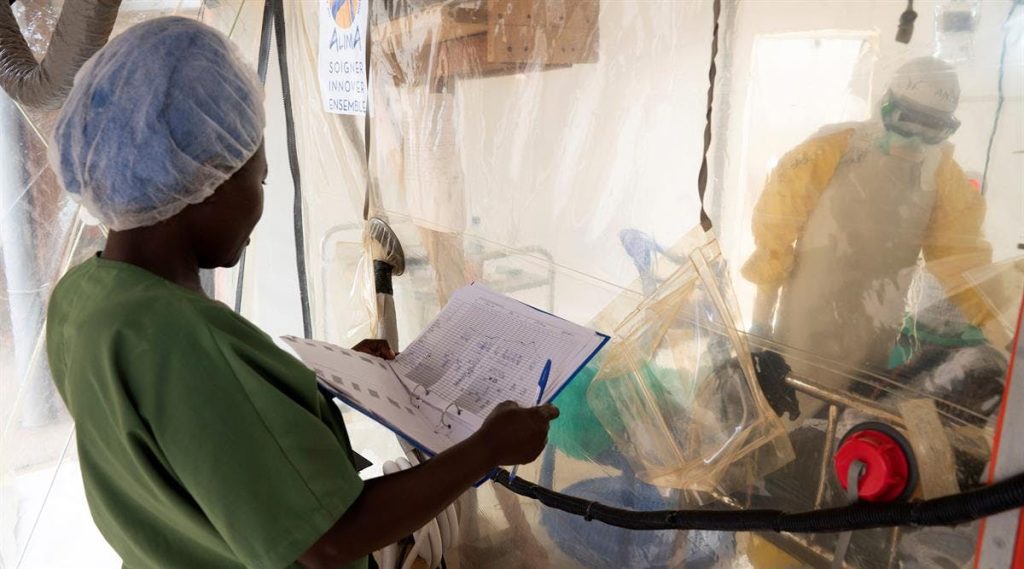Exactly one year ago, the Democratic Republic of Congo (DRC) declared an outbreak of the Ebola virus in the country’s North Kivu province, a region already plagued by violence and displacement.
Since then, the highly contagious and deadly virus has infected more than 2,600 people and caused more than 1,800 deaths, becoming the second-largest Ebola outbreak in history. Of those infected, almost one in three are children.
Just last month, the World Health Organization (WHO) declared the outbreak a public health emergency of international concern after officials confirmed the first case of Ebola in Goma, a city of nearly 2 million people on the country’s eastern border with Rwanda that serves as a major travel hub in the region.
Earlier this week, the virus claimed the life of second patient in Goma. Meanwhile, health officials have confirmed three cases in neighboring Uganda—the first time this outbreak has crossed borders.
These grim developments underscore why global challenges like the spread of deadly disease require a coordinated international response, including adequate funding and assistance from other nations and partners across the globe.
Right now multiple UN agencies — including WHO, UNICEF, the UN Office for the Coordination of Humanitarian Affairs (OCHA), and the World Food Programme (WFP) — are working alongside government officials in the DRC and Uganda to treat those infected, protect those at risk, and work to contain the virus.
This means:
• More than 170,000 people have been vaccinated with a new and promising Ebola vaccine.
• 1,300 patients have been treated with investigational therapies across 14 treatment and transit centers.
• 77 million national and international travelers have been screened for the virus.
• 20,000 contacts are visited daily to ensure they do not become sick.
• 3,000 samples are tested in eight laboratories every week.
• More than 10,000 hand-washing sites have been installed in critical locations.
• More than 2,000 community engagement workers are now operating in affected areas.
• More than 440,000 patients and contacts have received food assistance to limit movement.
• 25,000 schoolchildren have been provided with daily meals in Ebola-affected areas.
These efforts are being conducted in partnership with non-governmental organizations and civil society partners and bolstered by crucial leadership from local, state, and national authorities in the DRC and Uganda. American aid agencies like the U.S. Centers for Disease Control and Prevention (CDC) and the U.S. Agency for International Development are also stepping up. Following the confirmed cases in Uganda, the CDC activated its emergency operations center to support ongoing efforts. Working together, all of these partners are vital to controlling and ultimately ending this epidemic.
The already complicated response to this outbreak has been challenging for a number of reasons. Its epicenter is an active conflict zone. Mistrust and fear of outside medical authorities have led to deadly attacks against health workers. Yet despite these challenges, health officials are starting to see a decline in cases. Taking lessons from the 2014 Ebola outbreak, WHO has instituted new financing structures and vaccine procedures to help the agency react more quickly and efficiently.
Strong, capable, and most importantly well-financed UN agencies are integral to containing the virus. Training more than 9,000 health workers, tracing thousands of contacts, mobilizing vaccination personnel and commodities, and running preparedness drills requires significant financial resources.
But right now, WHO is facing an estimated funding gap of $54 million to adequately respond to this public health emergency — and that gap is widening. Meanwhile, UNICEF estimates that the agency will need to triple its budget to meet currents needs. Without additional resources, UN agencies and their partners will be unable to maintain efforts at scale.
“Ebola passes from mother to child, husband to wife, patient to caregiver, from the dead body of a victim to the mourning relative,” the heads of WHO, OCHA, UNICEF, and WFP wrote in a joint statement.
“The public health response to an Ebola outbreak requires an exceptional level of investment; 100 percent of cases must be treated and 100 percent of contacts must be traced and managed.”
“We will continue to accelerate our response, and we ask partners old and new to do the same.”
Now more than ever, the international community must redouble its commitment to support this emergency response before it’s too late.
We can’t wait another year.
Learn More
Discover how you can help with the ongoing Ebola outbreak response.

